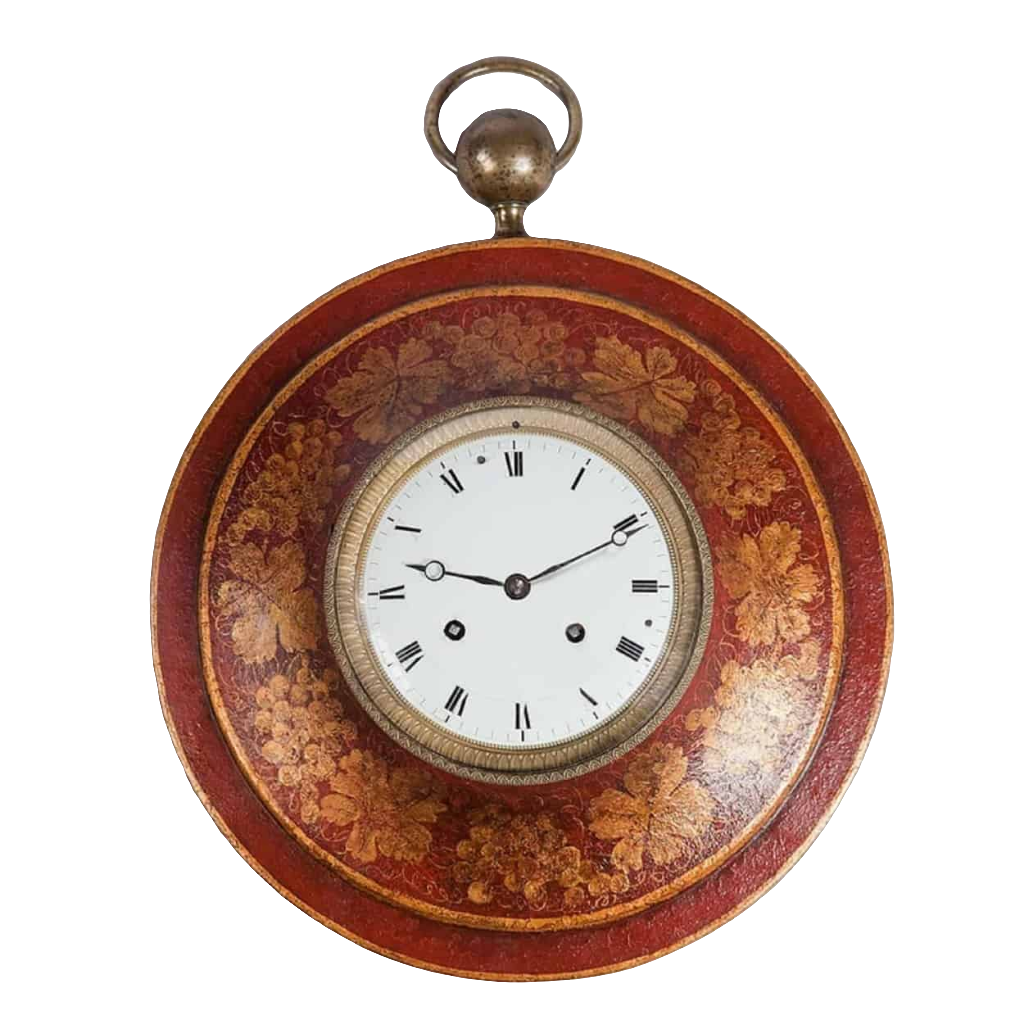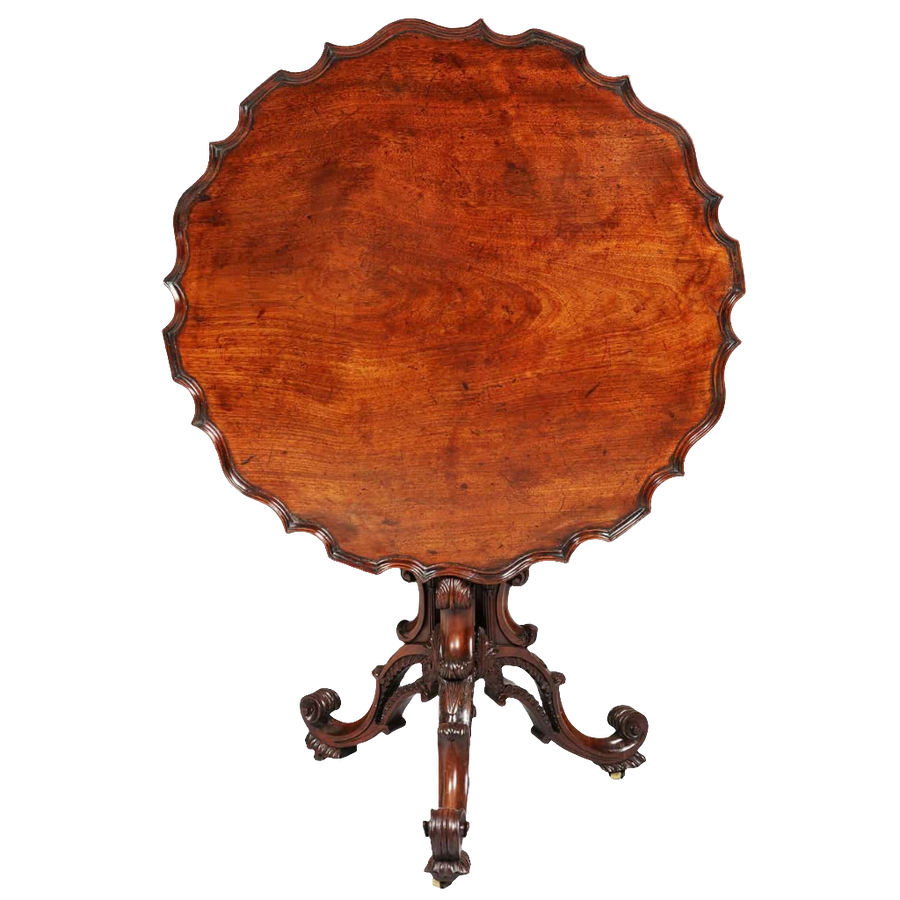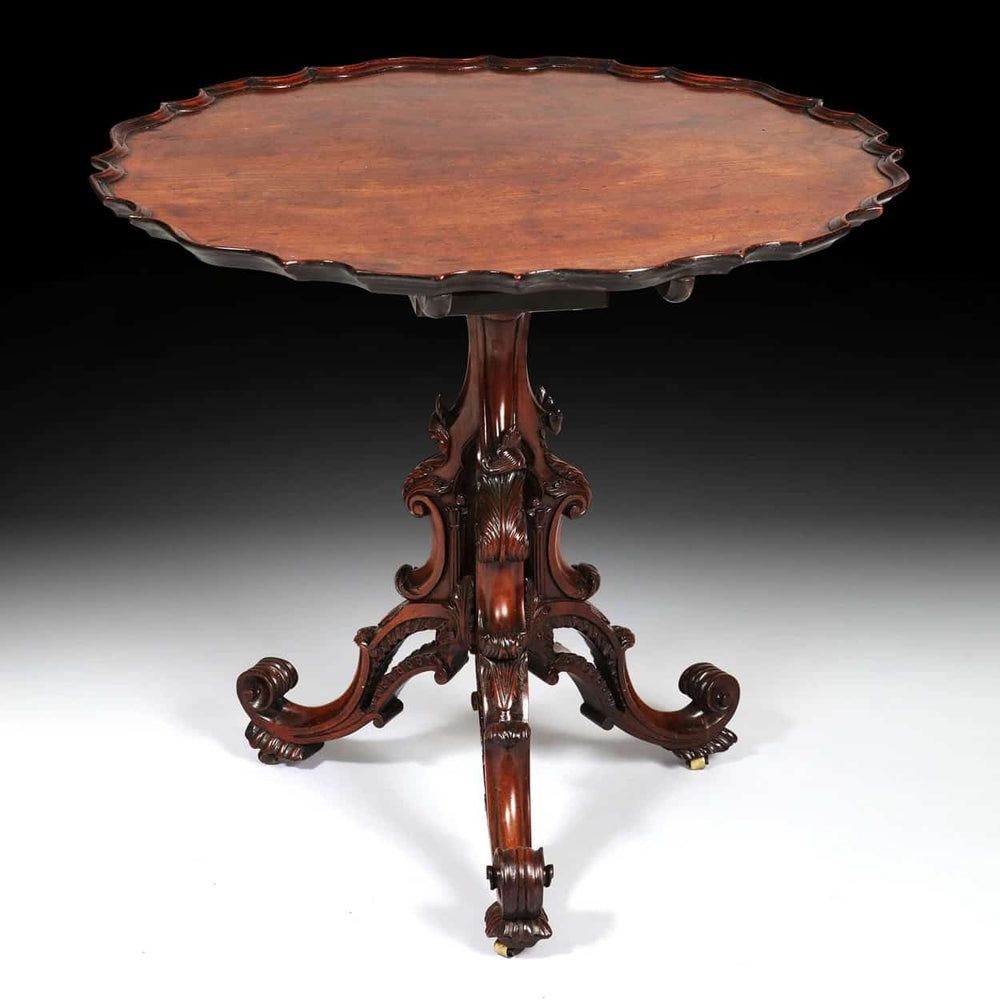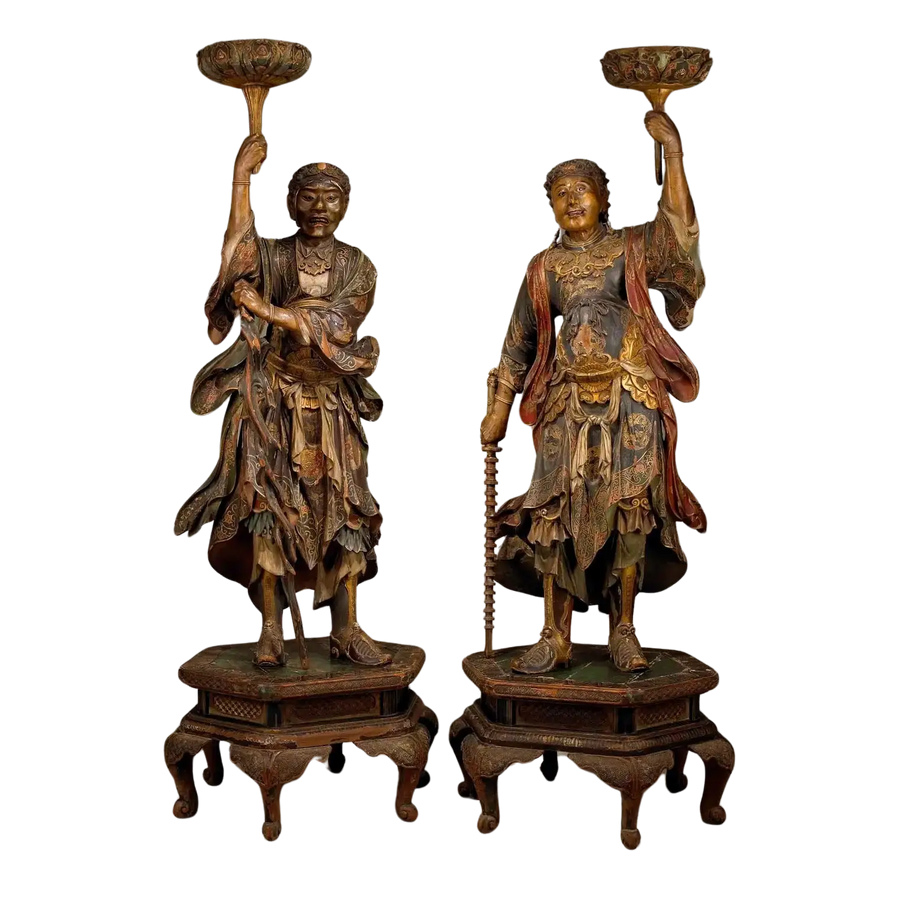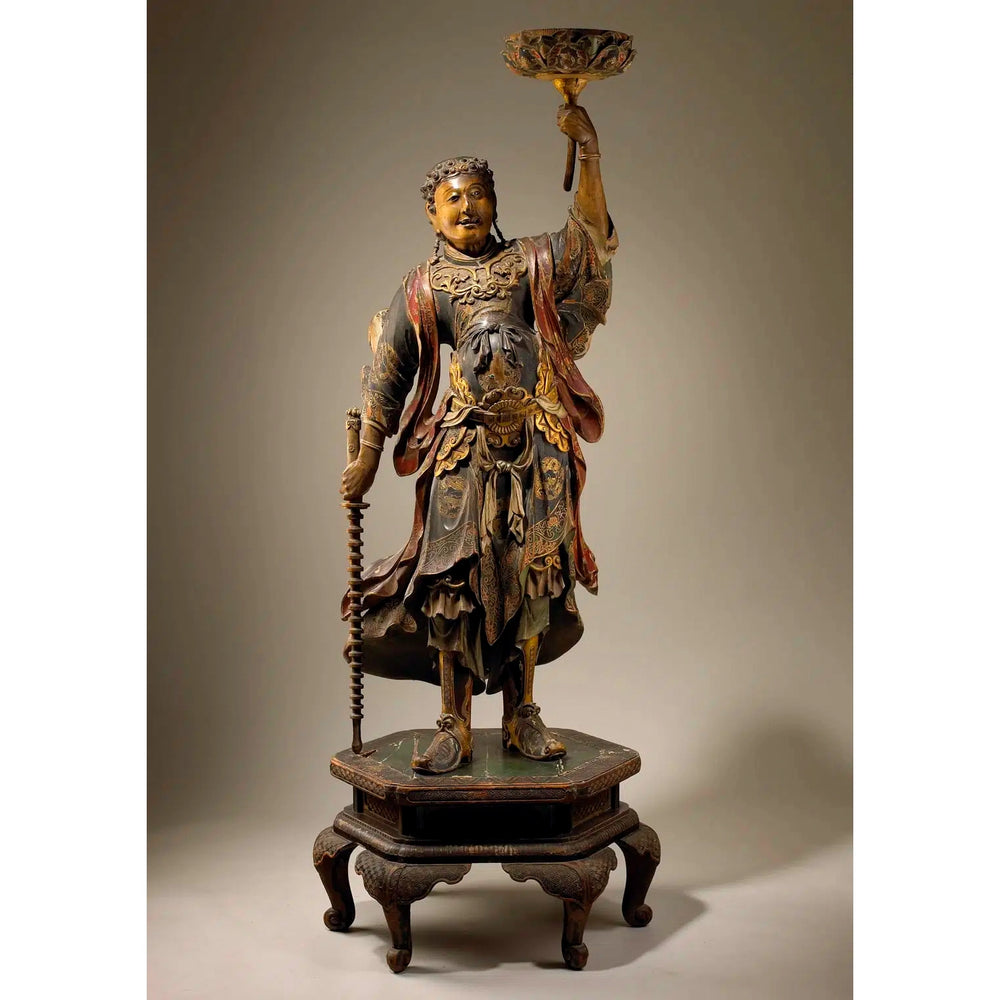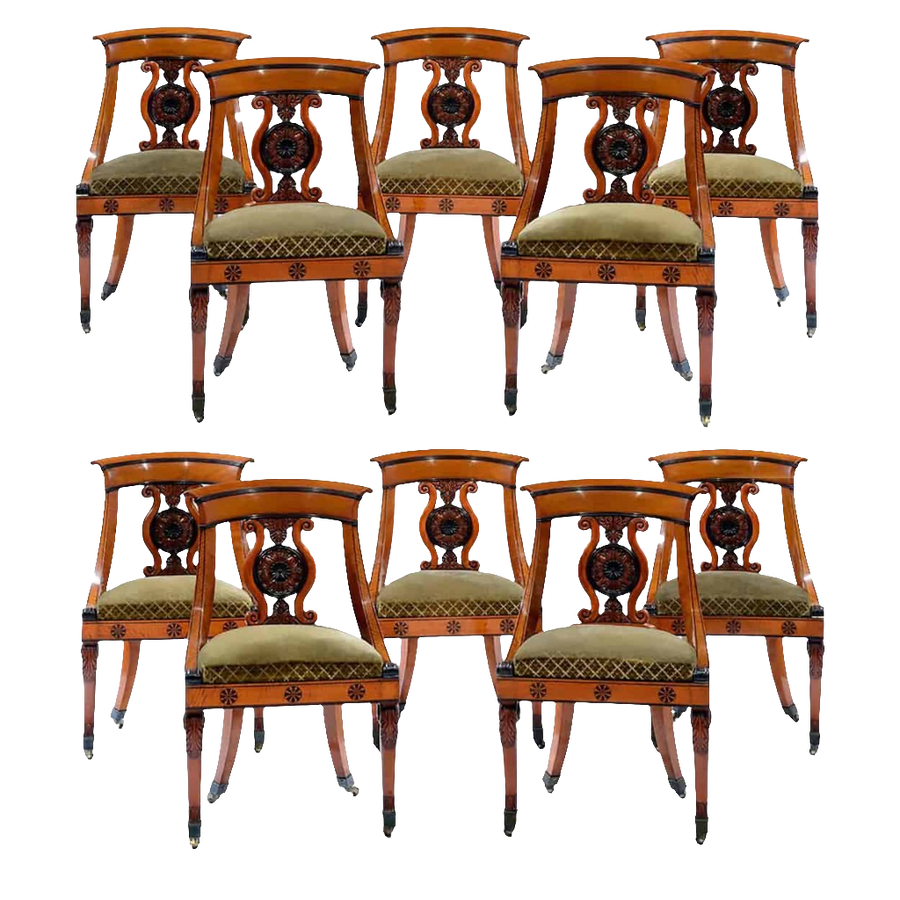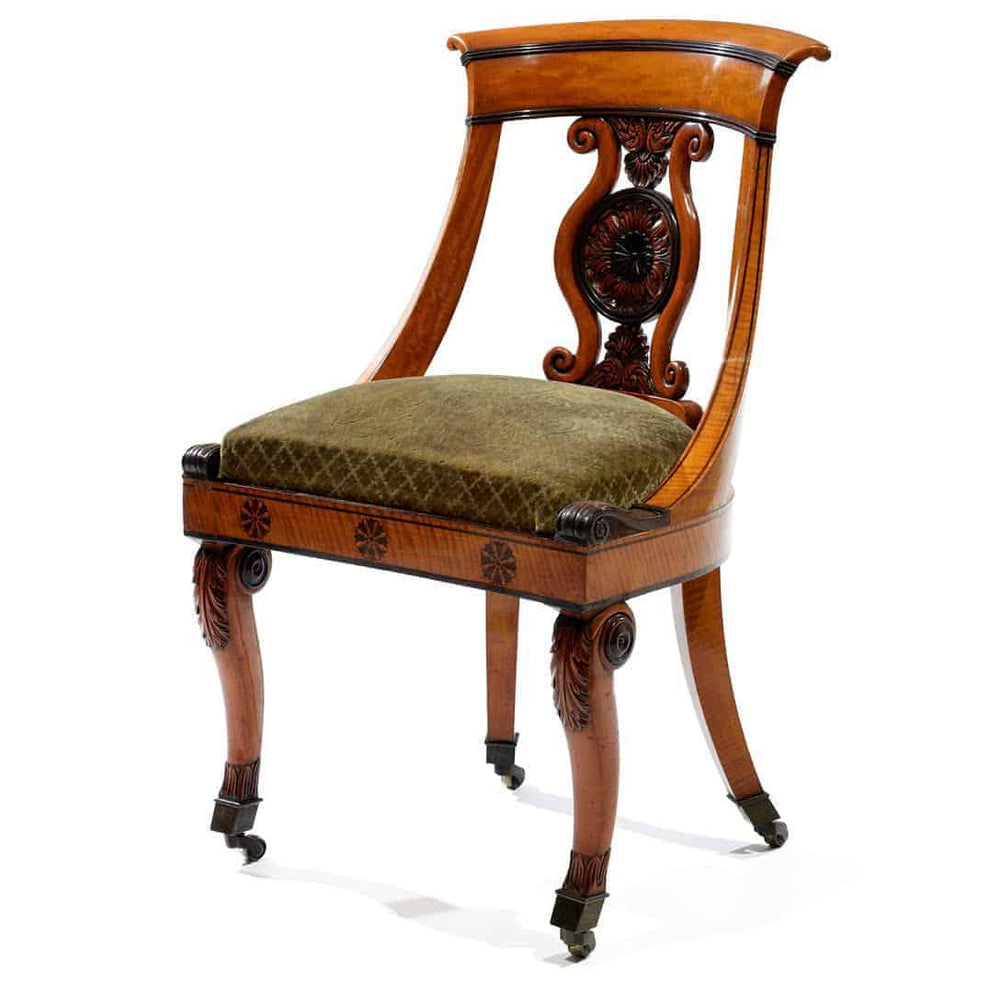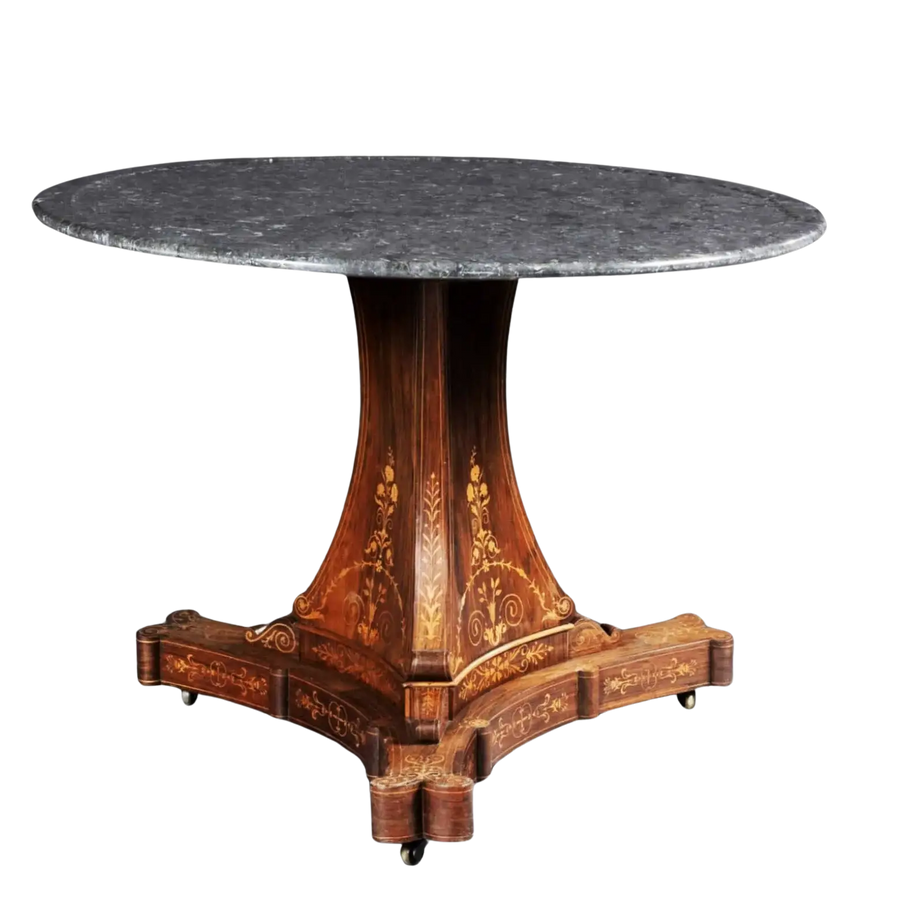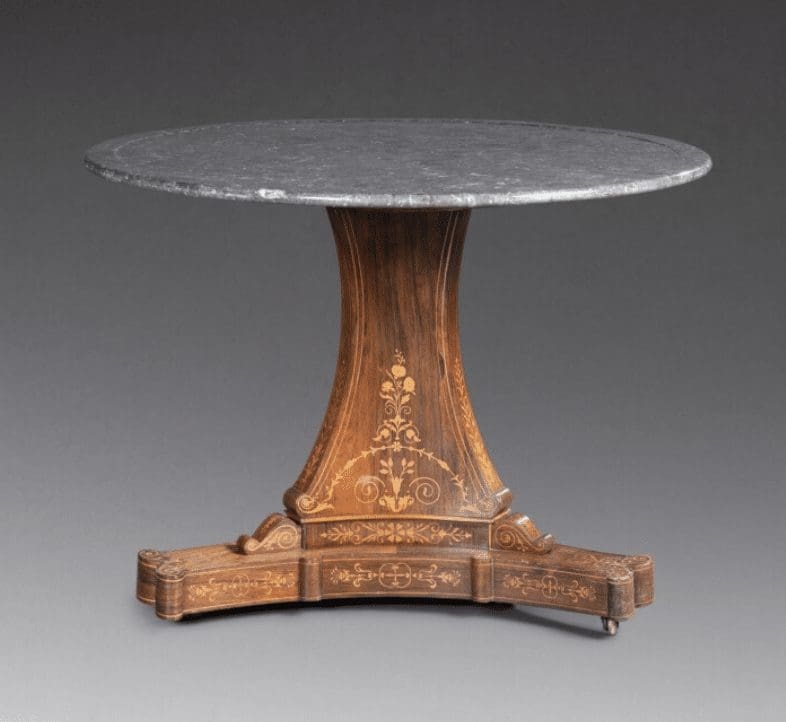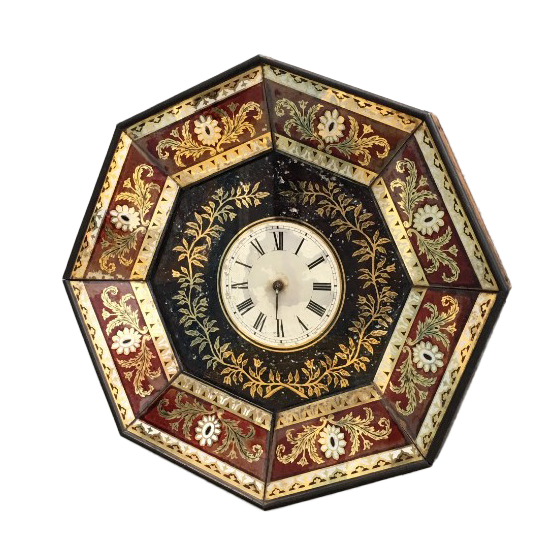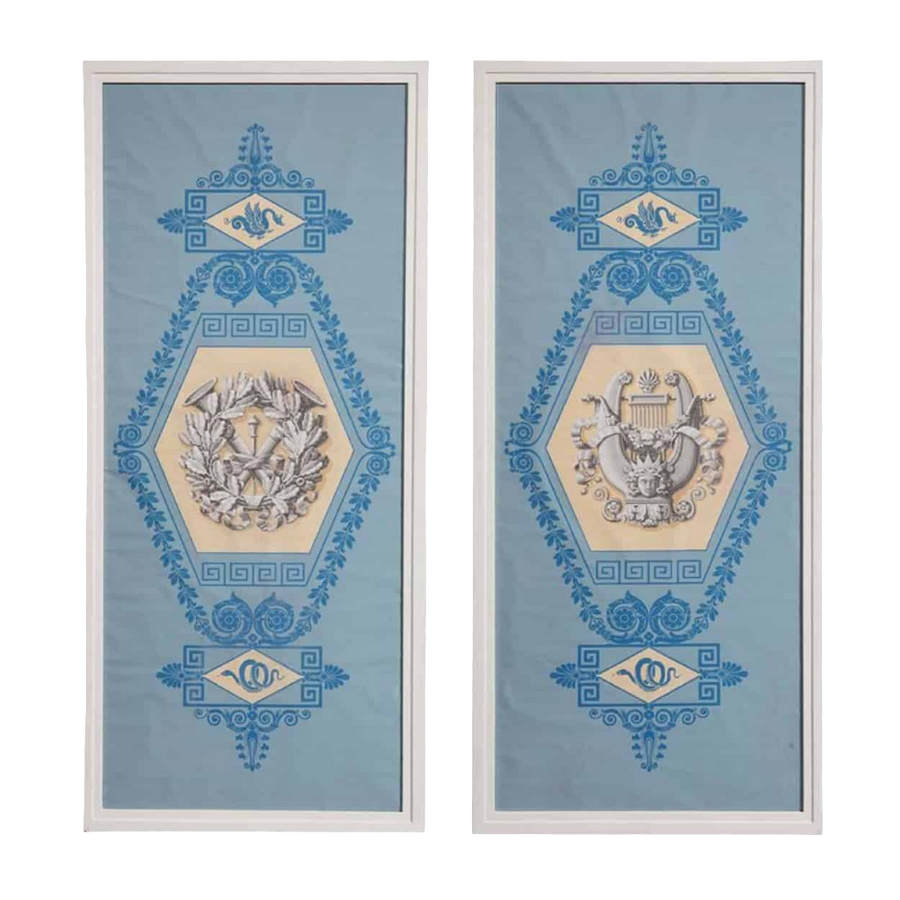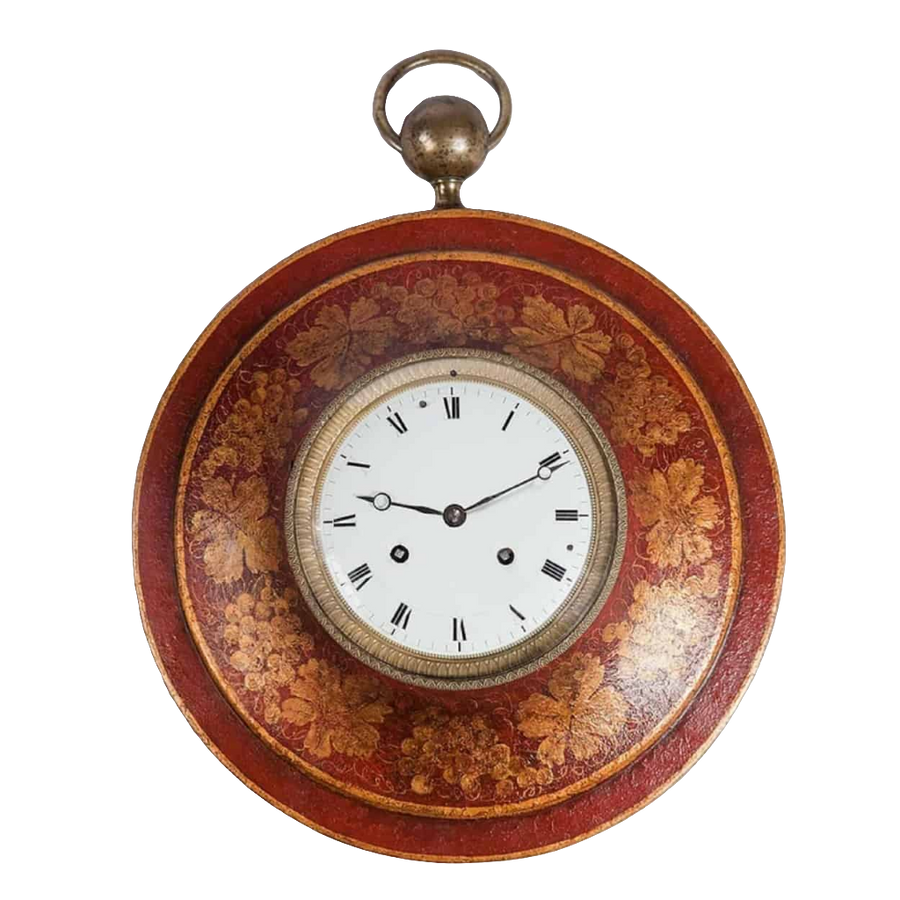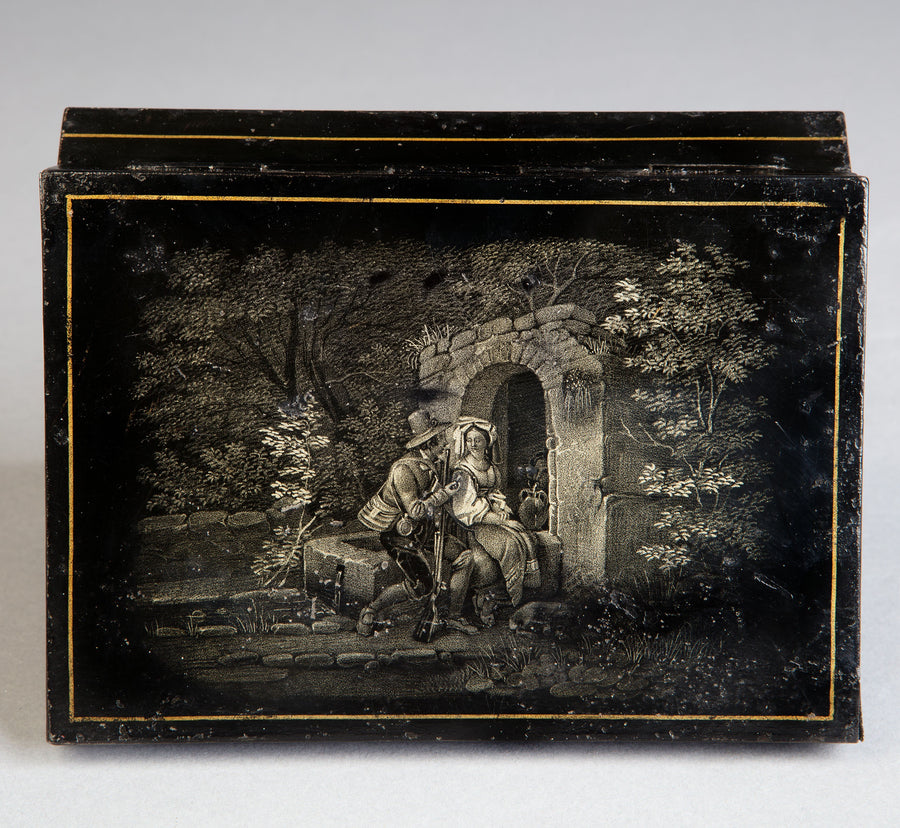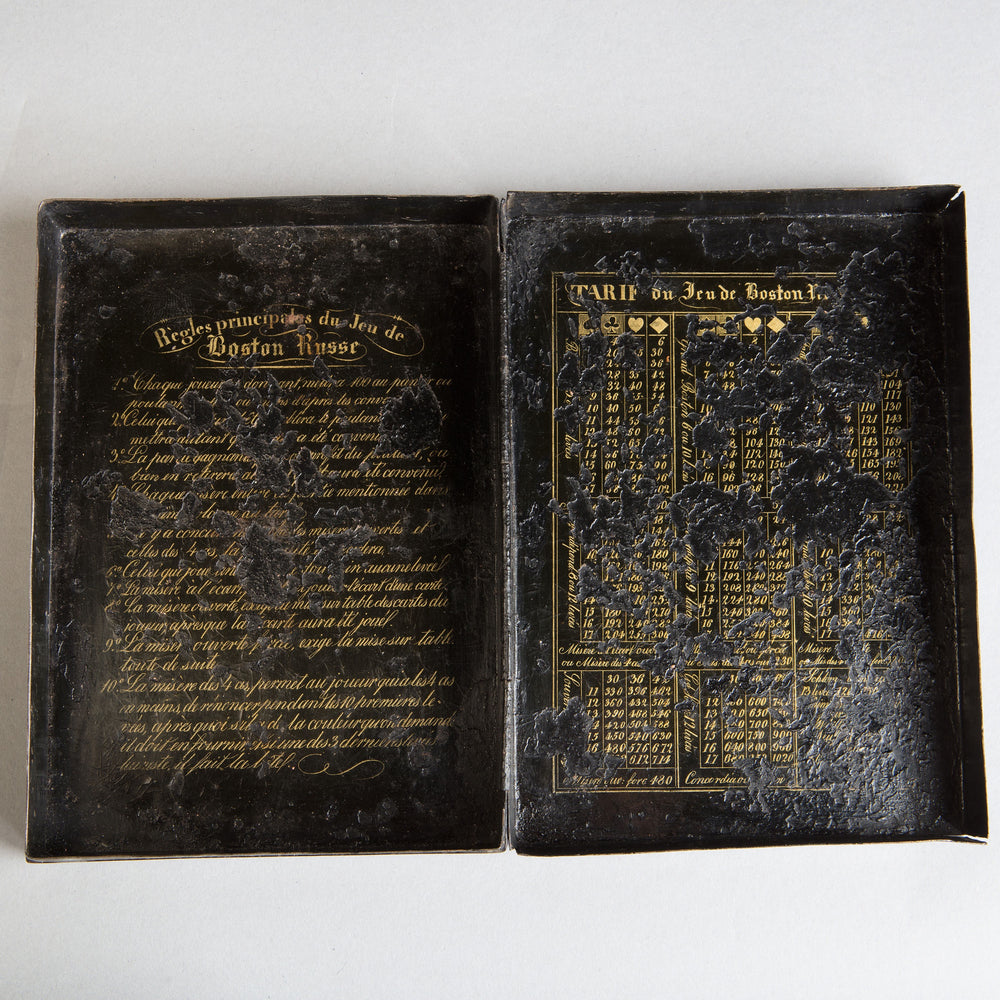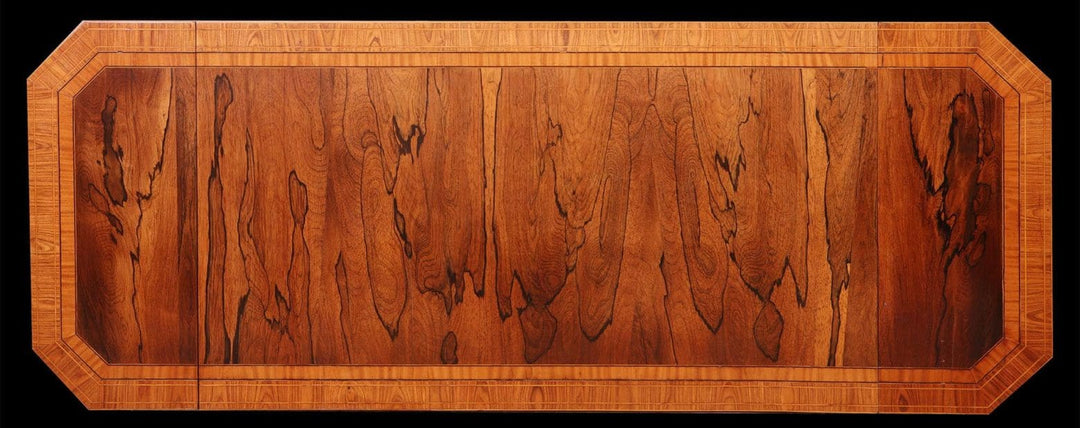The Charles X period (1824–1830), during the reign of King Charles X of France, represents the final flowering of French Neoclassicism before the advent of Romantic and Revival styles. Building on the elegance of the Louis XVI and Empire periods, Charles X design embraced classical order while introducing a richer, more ornamental aesthetic.
Style and Furniture
Furniture of the Charles X period retained classical motifs — columns, pilasters, and architectural cornices — but with a heightened emphasis on luxury and decoration. Makers employed exotic timbers such as mahogany, rosewood, and ebony, often enlivened with contrasting inlays of brass, ivory, or mother-of-pearl. Fine veneers were polished to a high sheen, while gilt-bronze mounts and delicate carving reinforced the sense of opulence.
Textiles and Ornament
Innovation in textiles characterised the period. The development of roller printing allowed for intricate, repeatable patterns in vivid colours, expanding decorative possibilities for upholstery and drapery. Luxurious fabrics — silk, velvet, and wool — were woven and embroidered with scrolling foliage, floral garlands, and occasionally exotic animals, reflecting both classical taste and a growing interest in naturalistic and global motifs.
Legacy
Though short-lived, the Charles X period is admired for its balance of neoclassical discipline and decorative richness. Furniture and decorative arts from this era embody a transitional moment in French design, bridging the restraint of Empire with the eclectic revival styles that defined the later 19th century. Today, Charles X antiques are prized for their craftsmanship, fine materials, and elegant yet sumptuous character.
The Charles X period (1824–1830), during the reign of King Charles X of France, represents the final flowering of French Neoclassicism before the advent of Romantic and Revival styles. Building on the elegance of the Louis XVI and Empire periods, Charles X design embraced classical order while introducing a richer, more ornamental aesthetic.
Style and Furniture
Furniture of the Charles X period retained classical motifs — columns, pilasters, and architectural cornices — but with a heightened emphasis on luxury and decoration. Makers employed exotic timbers such as mahogany, rosewood, and ebony, often enlivened with contrasting inlays of brass, ivory, or mother-of-pearl. Fine veneers were polished to a high sheen, while gilt-bronze mounts and delicate carving reinforced the sense of opulence.
Textiles and Ornament
Innovation in textiles characterised the period. The development of roller printing allowed for intricate, repeatable patterns in vivid colours, expanding decorative possibilities for upholstery and drapery. Luxurious fabrics — silk, velvet, and wool — were woven and embroidered with scrolling foliage, floral garlands, and occasionally exotic animals, reflecting both classical taste and a growing interest in naturalistic and global motifs.
Legacy
Though short-lived, the Charles X period is admired for its balance of neoclassical discipline and decorative richness. Furniture and decorative arts from this era embody a transitional moment in French design, bridging the restraint of Empire with the eclectic revival styles that defined the later 19th century. Today, Charles X antiques are prized for their craftsmanship, fine materials, and elegant yet sumptuous character.
Read More
